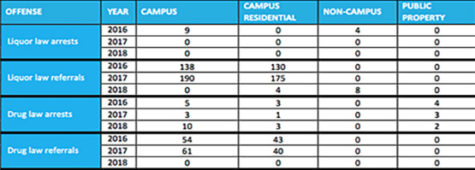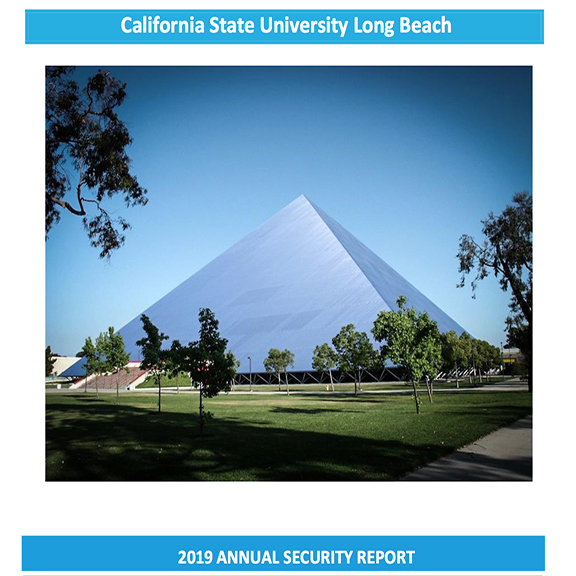The 2019 Annual Crime Report was released by the University Police Department and showed that there was a dramatic decrease in campus drug and liquor law referrals from 2017 to 2018.
Reaching an all time high in 2017, a total 190 liquor referrals and 61 drug referrals were issued. However, by 2018 both categories reached zero. Referral refers to incidents of student conduct reported to the police. Capt. John Brockie of UPD said that they’re looking into why the numbers show such a dramatic decrease, but wasn’t willing to speculate on a reason behind it.

The report was compiled by the UPD, the Office of Equity and Diversity and the Clery Compliance Team.
Statistics listed reflect all reports received by the university, but are not necessarily crimes committed, prosecuted or founded, according to Larisa Hamada, assistant vice president for the Office of Equity and Diversity.
Brockie said that incidents listed as “arrests” are in fact individuals who were arrested, but whether they were sentenced is up to the city prosecutor or district attorney, depending on the severity of the crime.
Most reported numbers remained the same with little variance over the time period. However, some did experience an increase between 2017 to 2018.
The largest increase was in drug law arrests on campus. In 2017, three people were arrested versus 10 in 2018. Brockie was unable to share information regarding what kinds of drugs were involved.
“Sometimes it [crime] goes in cycles,” Brockie said.
Dating violence is defined as “abuse committed by a person who is or has been in a social or dating relationship of a romantic or intimate nature with the victim,” by the report. There was an increase from zero dating violence incidents reported in 2017 to three incidents reported in 2018 on campus and one report from the dormitories.
“More people are feeling more comfortable telling their story,” said Larisa Hamada, assistant vice president of Equity and Diversity.
Reports of rape on campus decreased from five in 2017 down to one in 2018, and from four in the dorms in 2017 to one in 2018, a trend Hamada couldn’t attribute to any one thing. However, she did cite the university’s “intensive” Title IX training programs and resources as a potential reason.
Crimes such as motor vehicle theft, domestic violence and burglary remained comparable, with no more than five variances in reports between the three years both on campus and in the housing units.
“It’s a safe campus, but I never take that for granted,” Hamada said.
The study also included information for students on who to contact in case of a crime or emergency on campus or in the residential housing. Resources for those affected by crime, drug or alcohol abuse or sexual violence were also provided.
“We ask our community to play an active role in crime prevention,” Brockie said.




